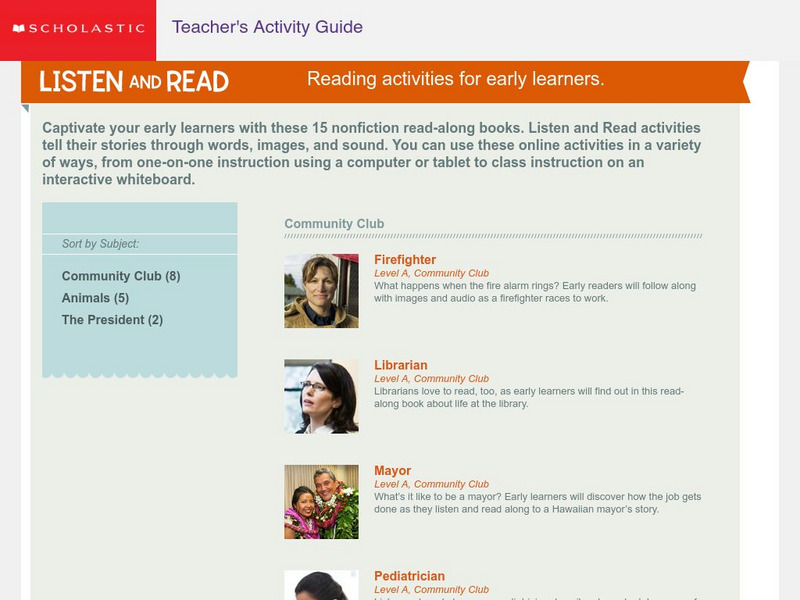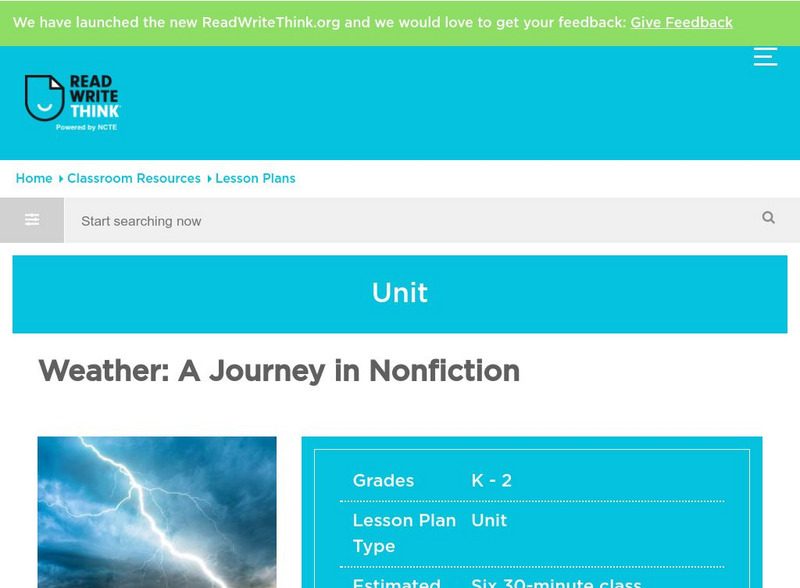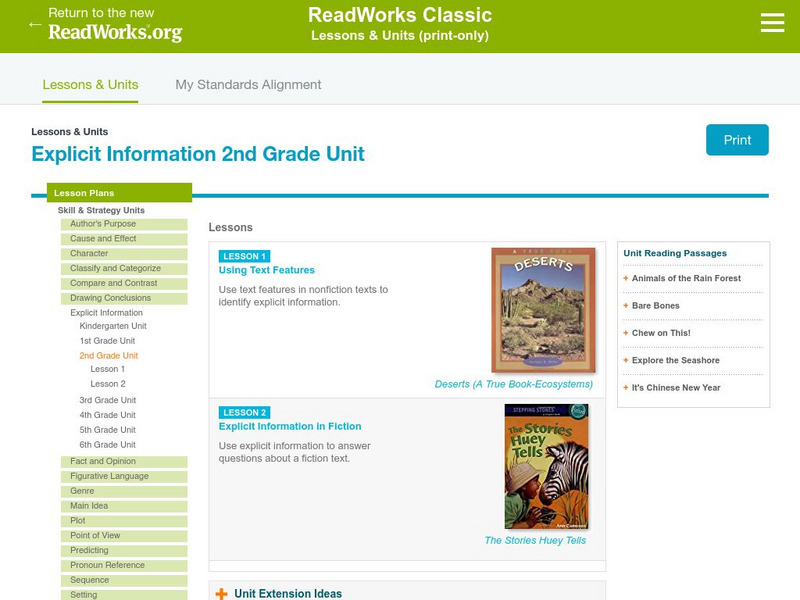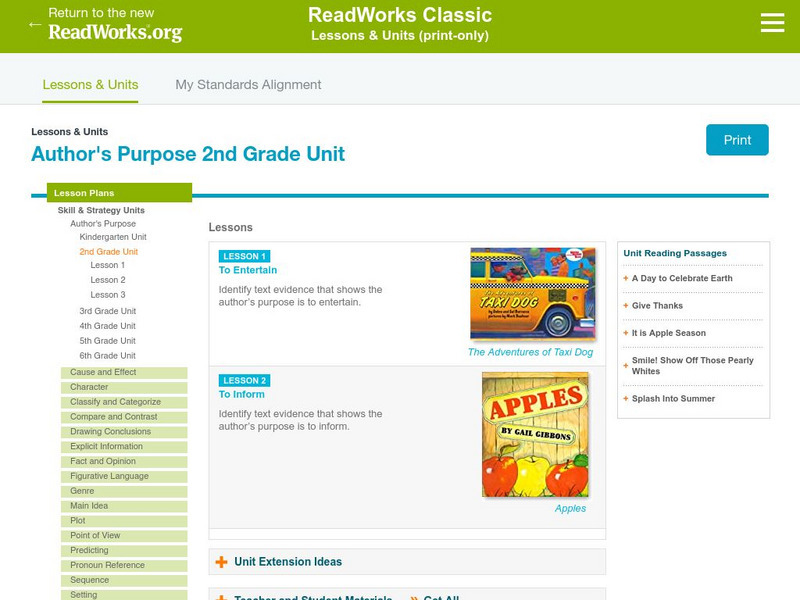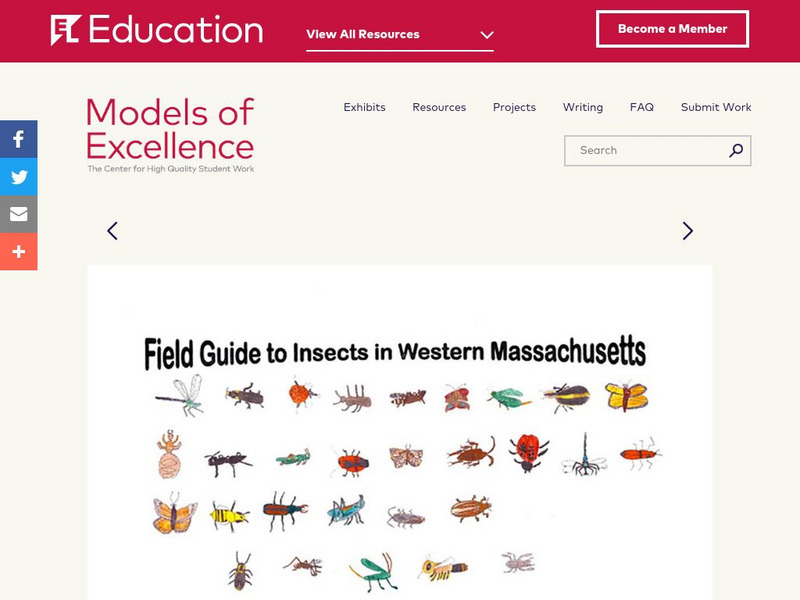Hi, what do you want to do?
ReadWriteThink
Read Write Think: Shhh! Bear's Sleeping: Learning About Nonfiction and Fiction
Students explore the distinction between the fiction story Bear Snores On and the nonfiction book Every Autumn Comes the Bear.
Read Works
Read Works: Genre 1st Grade Unit: Identifying Information in Nonfiction
[Free Registration/Login Required] A lesson in which young scholars use the books Nature's Food Chains: What Polar Animals Eat by Joanne Mattern, Life Cycle of a Frog by Angela Royston, and Froggy Goes to School by Jonathan London to...
Other
Seattle University: Literature Circles Resource Center
How can you get started with literature circles in your classroom? This site provides information on every aspect of developing your own literature circle instruction.
Starfall
Starfall: Plays, Fiction, Nonfiction
An index of links to six fiction storybooks, eight nonfiction books, and three plays. Each book has pictures and audio that will allow students to click to hear sentences or individual words as they read along. Links to three different...
Reading Rockets
Reading Rockets: Nonfiction
Provides advice for how to incorporate nonfiction into a reading program. Includes videos, links to downloadable 'adventure packs,' tip sheets for parent, a list of websites on nonfiction, and articles.
Scholastic
Scholastic Teaching Resources: Five Finger Facts [Pdf]
From Just-Right Reading Response Activity Sheets for Young Learners, this graphic organizer can be used when students read informational texts. As responses to nonfiction, students will write the following information about their...
Read Works
Read Works: Columbus Was an Explorer
[Free Registration/Login Required] This short nonfiction book passage is about Christopher Columbus and his contributions to exploration. This book in the SummerReads series, intended to work against the summer reading slide, reinforces...
Florida Center for Reading Research
Florida Center for Reading Research: Fiction and Nonfiction Sort [Pdf]
A lesson plan in which students look at different books, write their titles, and sort them according to whether they are fiction or nonfiction. Materials are included.
Read Works
Read Works: 1st Grade Lesson: Purposes for Reading
[Free Registration/Login Required] A lesson in which students use the books Nature's Food Chains: What Polar Animals Eat by Joanne Mattern, Life Cycle of a Frog by Angela Royston, and Froggy Goes to School by Jonathan London to learn to...
Read Works
Read Works: 1st Grade Lesson: Classifying Texts
[Free Registration/Login Required] A lesson plan in which students use the books Froggy Goes to School by Jonathan London and Life Cycle of a Frog by Angela Royston to learn to classify texts as fiction or nonfiction. Lesson includes...
Scholastic
Scholastic: Listen and Read
Choose to read and/or listen to 15 different books on members of the community, animals, and the President. Review vocabulary at the end of each book.
Starfall
Starfall: Wolves
This is a nonfiction interactive ebook about wolves and their family. Children can choose to read the book independently or click on the ear to have sentences read to them.
University of Kentucky
Read More About Insects and Their Relatives
This hyperlinked bibliography of resource books about insects is organized by topics that include insect societies, insect-plant relationships, general insects, behavior, history, collecting, development, fiction, and the like.
ReadWriteThink
Read Write Think: Weather: A Journey in Nonfiction
Questions about weather clear up when students use what they learned from their books to create a presentation to share with the rest of the class.
Read Works
Read Works: Grade 2: Two Lesson Unit: Explicit Information
[Free Registration/Login Required] Designed to teach students to identify explicit information in nonfiction and fiction texts. Lessons are based on the books Deserts (A True Book-Ecosystems) by Darlene R. Stille and The Stories Huey...
Read Works
Read Works: Main Idea 1st Grade Unit
[Free Registration/Login Required] Students learn to use titles and supporting details in both fiction and non-fiction texts in order to identify the main idea of the book in this three-lesson unit. The lessons utilize the books Animal...
Read Works
Read Works: Explicit Information 1st Grade Unit
[Free Registration/Login Required] A two-activity unit in which students learn how to identify explicit information in both fiction and non-fiction texts. The lessons utilize the books Frogs by Gail Gibbons and Stellaluna by Janell...
Scholastic
Scholastic: Listen and Read: Pediatrician
Listen and read along as a pediatrician describes how she takes care of children in this interactive book for early learners.
Read Works
Read Works: Grade 2: Three Lesson Unit: Author's Purpose
[Free Registration/Login Required] A series of three lesson plans designed to teach students to identify author's purpose including to entertain, to inform, and to persuade. Lessons are based on the books The Adventures of Taxi Dog by...
Starfall
Starfall: All About Ducks
This interactive focuses on ducks including what they look like and what they do. Children can read independently or click on the ear to have sentences read to them.
Starfall
Starfall: Seals
This interactive focuses seals including where they live and what they eat. Children can read independently or click on the ear to have sentences read to them.
Starfall
Starfall: We Saw a Hawk
This interactive focuses a family seeing a hawk while camping. Children can read independently or click on the ear to have sentences read to them.
EL Education
El Education: Field Guide to Insects in Western Massachusetts
This field guide was created by 2nd graders in Springfield, Massachusetts. It was part of a two-month Learning Expedition that included field observation and collection, classroom experimentation and research, reading from books and...
Alabama Learning Exchange
Alex: Dewey Decimal Classification System Mural
Students will select a book from an assigned section in the non-fiction area of the library. After reading the books, students will write a paragraph that summarizes the content area of the book. Students will illustrate the book that...





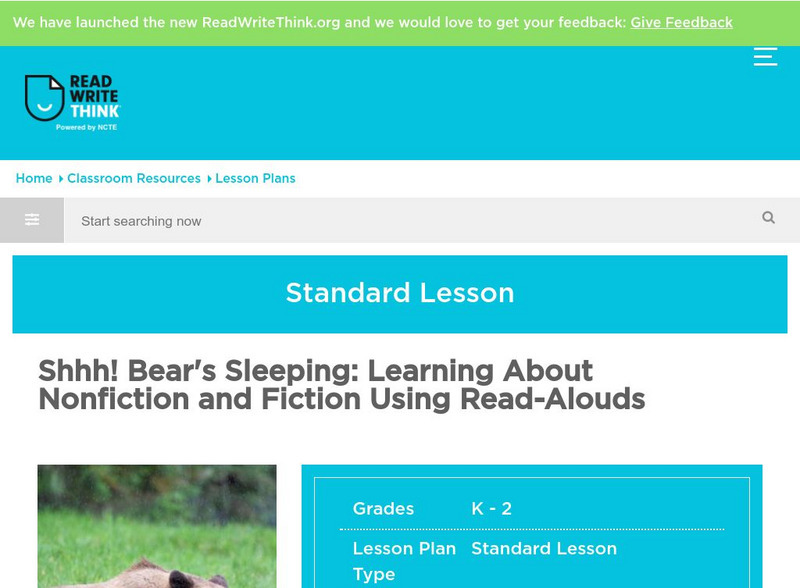
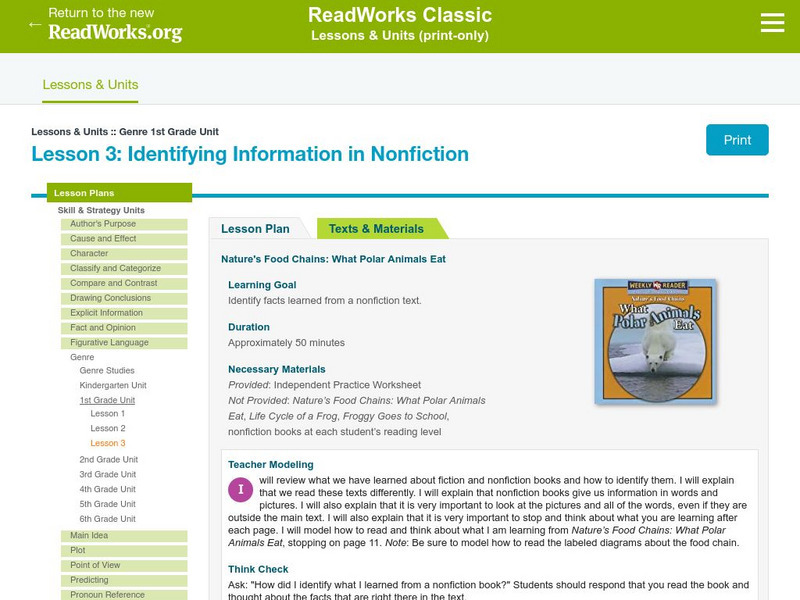
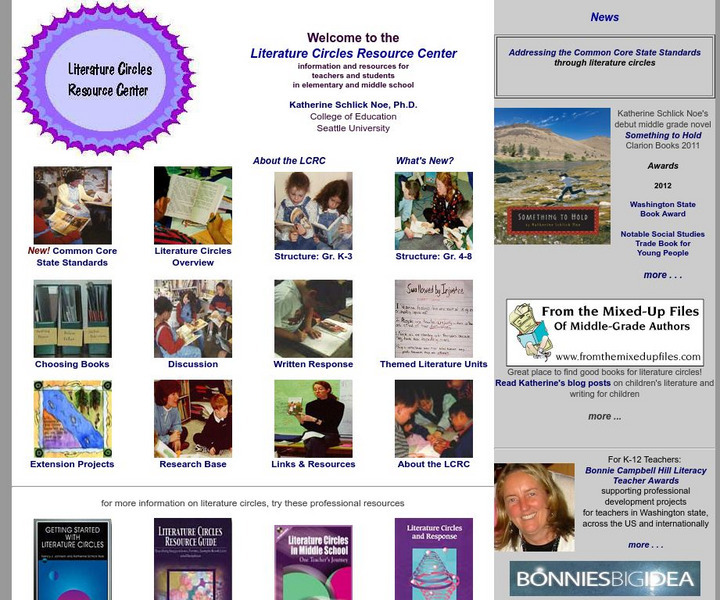

![Scholastic Teaching Resources: Five Finger Facts [Pdf] Graphic Scholastic Teaching Resources: Five Finger Facts [Pdf] Graphic](https://content.lessonplanet.com/knovation/original/261454-1ed71ed4b96b74111872432db98b51cc.jpg?1661510815)
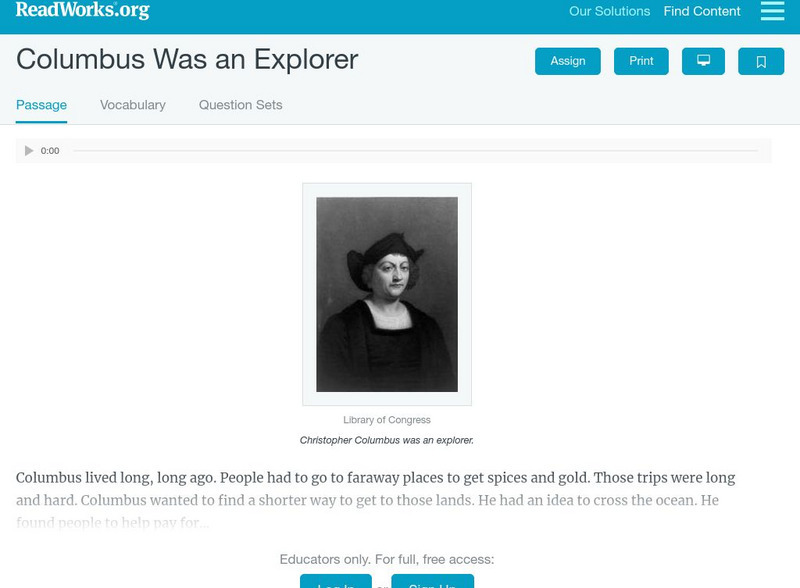
![Florida Center for Reading Research: Fiction and Nonfiction Sort [Pdf] Lesson Plan Florida Center for Reading Research: Fiction and Nonfiction Sort [Pdf] Lesson Plan](https://content.lessonplanet.com/knovation/original/509105-4469283d2301f2d80ae09183a55b8e2c.jpg?1661786967)


